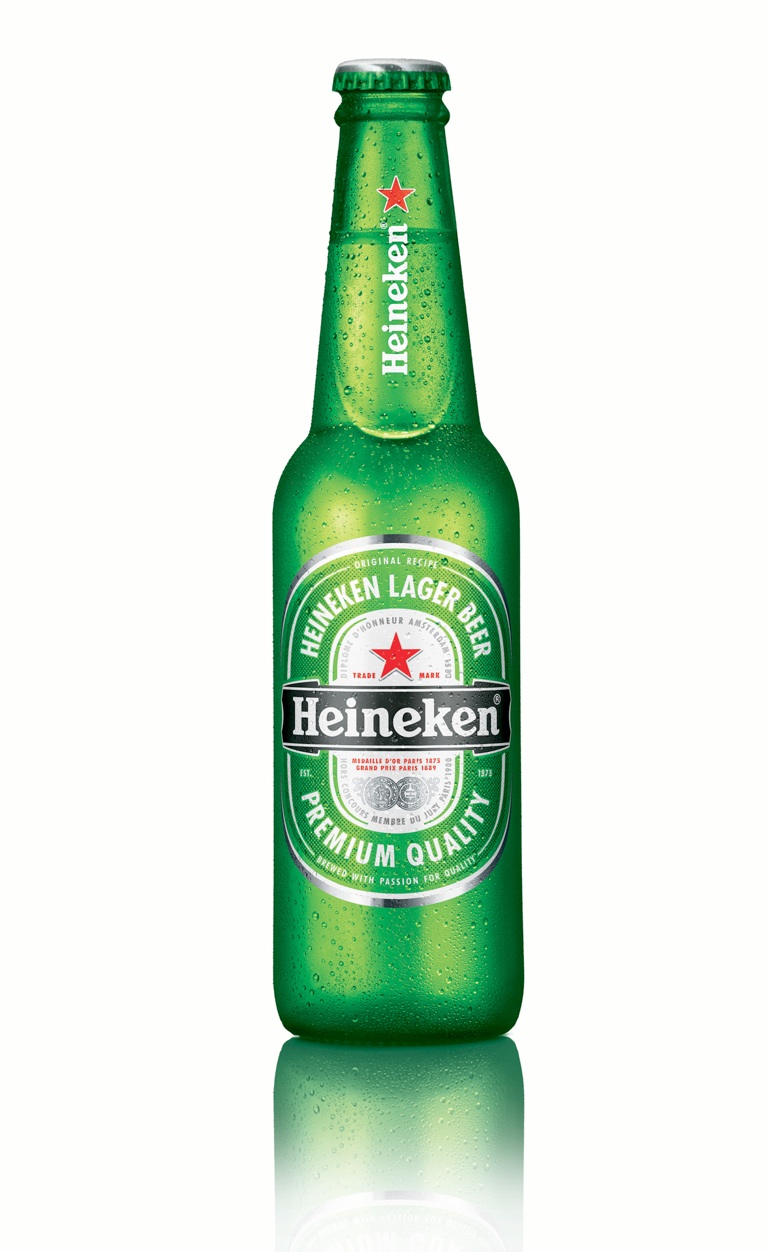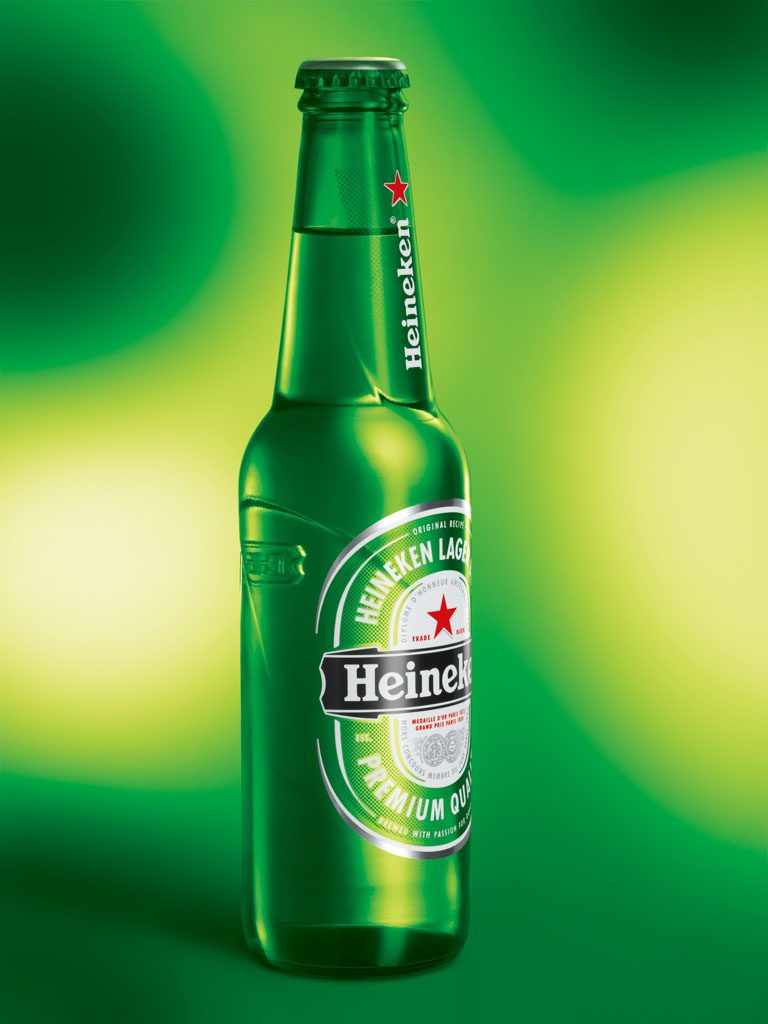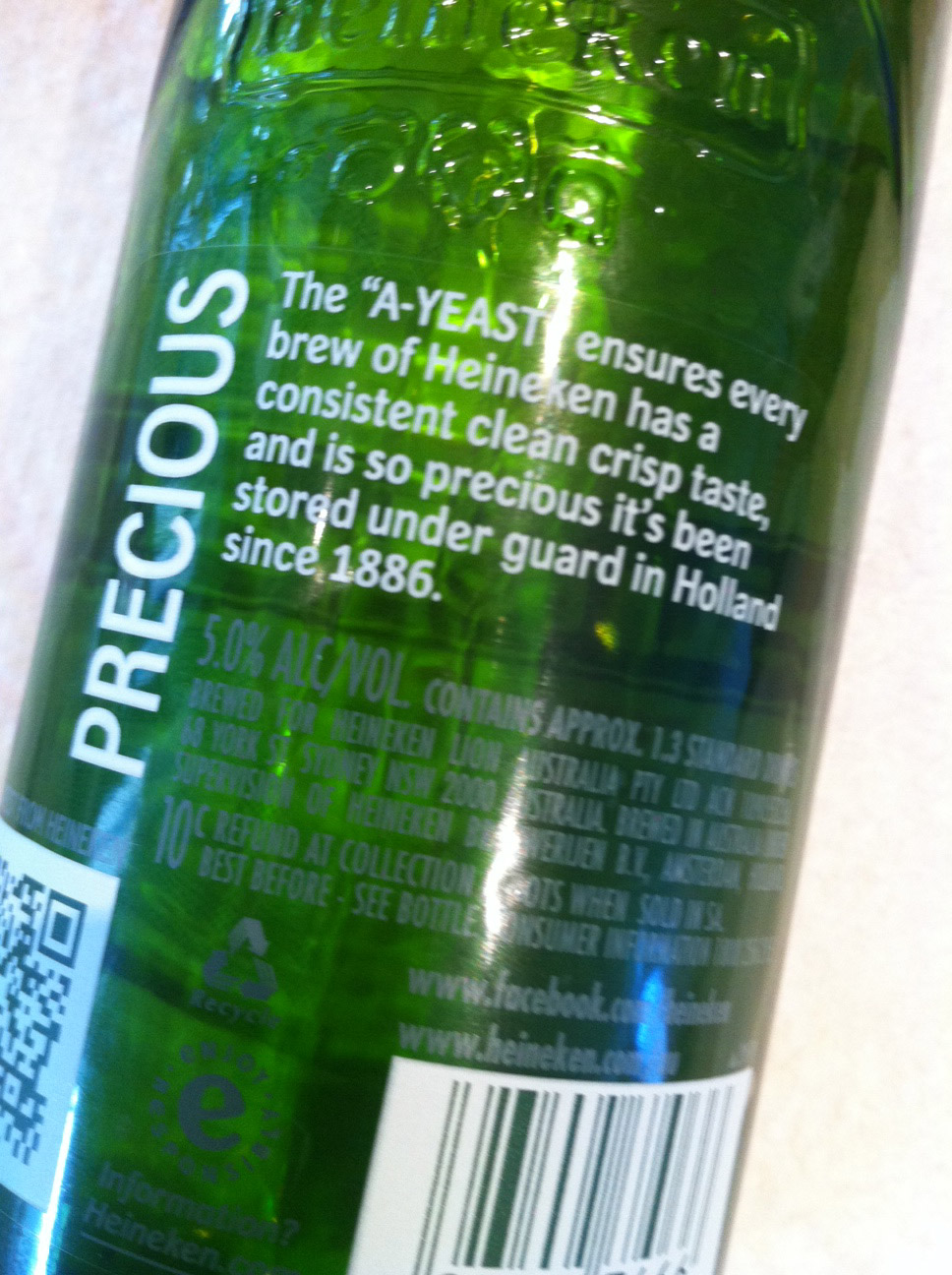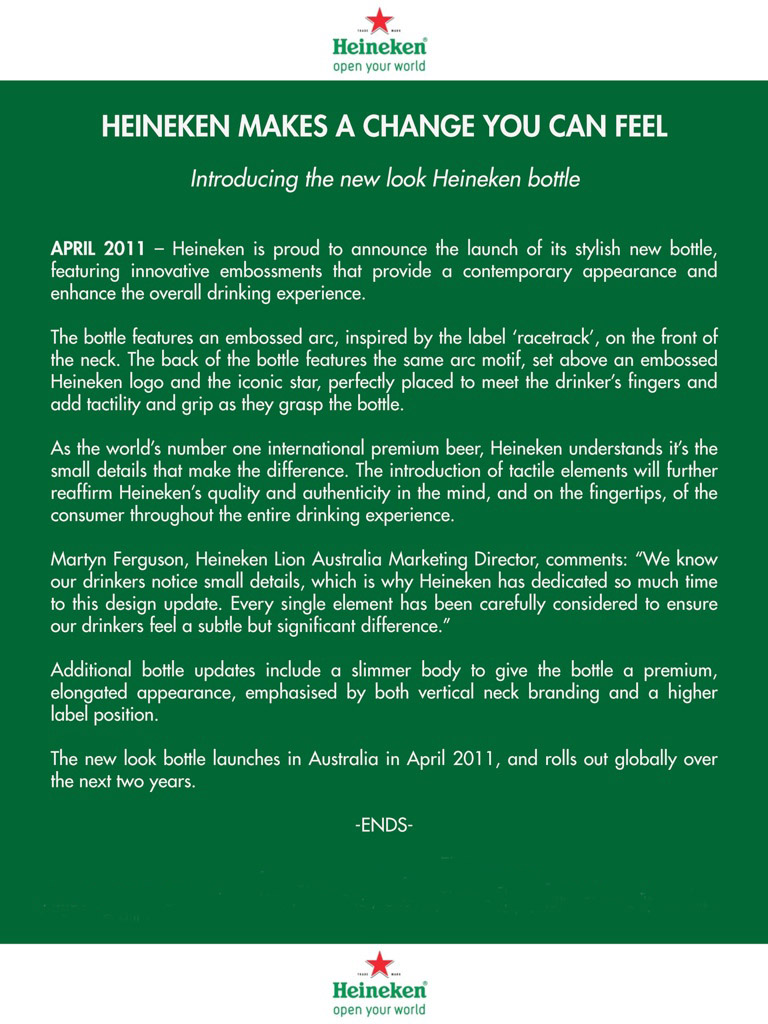
Heineken's new bottle
There is a story about Winston Churchill, most probably apocryphal, which has him inebriated at a dinner party. He asks the socialite sitting beside him whether she would sleep with him for a million pounds.
“Perhaps,” the woman replies coyly.
“Well, would you sleep with me for one pound?” Churchill then asks.
“Of course not, what kind of woman do you take me for?” the woman indignantly retorts.
“Madam, we’ve already established what kind of woman you are,” answers Churchill, “now we’re just negotiating the price.”
I was reminded of that story when, last Thursday, a package arrived at the Australian Brews News bunker, sent by Heineken’s public relations firm. It contained a clear acrylic box in which a single bottle of Heineken was mounted, looking for all the world like the crown jewels or an international sporting trophy. The package was probably the most impressive I have seen for a beer promotion, trumping even the wooden packing crate housing the mini keg of Sagres that arrived earlier in the week.
Even more overwhelming was the little clear draw built into the bottom of the perspex case that contained a brand-new iPod Touch containing a short video about the international beer brand’s new label, some music to listen to while reading the media release and a selection of product shots of the new bottle.
Now, the point of this story is that I already knew about Heineken’s new bottle design, but I had decided I probably wouldn’t write about it. There’s nothing much really to say. It’s a style refresh, and a minor one at that. There’s nothing else really to say about the beer. As the media release clearly points out – Heineken is the world’s #1 international premium beer. If you haven’t tried it yet you probably don’t drink beer. If you have tried Heineken, you either like it or you don’t. Beyond that, the only difference to almost any other international premium lager is what major international events they sponsor.
So, all in all, there didn’t seem to be too much to write about that wouldn’t be written everywhere else, pretty much taken from the media release. Having fairly limited resources and not being able to cover all of the beer stories that we do want to cover, I decided to basically ignore it.
And then the iPod turned up.
I really liked it, as did my kids who promptly claimed it. Could I keep the iPod if I didn’t write a story?But if I write a story about it just because they sent me a nice package and an expensive present, haven’t we established what I am and just negotiating the price?
It was an ethical dilemma, especially consideringIdidn’twrite about a similar brand refresh recently for Carlsberg – and they did more than just tidy up the bottle a little. Carlsberg is overhauling its entire marketing strategy in a bid to emphasise its heritage and add a greater sense of “essence” to the brand to try to appeal to a new generation of drinkers.
Of course, I wasn’t one of the business and marketing journalistsCarlsberg flew to Denmark to hear Carlsberg President & CEO Jorgen Bulh Rassmussen outline the new strategy. That’s probably why the Carlsberg story was written about in business and marketing magazines. That’s where you generally read about international beer brands, in the business or marketing pages. The story is always about the brand, the marketing or the takeover. If you wanted it written about in beer magazines you would fly beer journalists over, but the beer itself is almost always incidental to stories about beer brands. These beers are designed to be incidental.
A successful internationally-branded beer is designed to be very drinkable yet bland enough to appeal to the widest possible audience. It is then sold on the basis of our reflected aspirations. The beer provides a blank canvass for the brand, upon which marketers and brand managers project an image, one they hope we will see as desirable and a reflection of ourselves.
There’s nothing wrong with this in the slightest, but because there is little to say about the beer, international beer companies want business writers writing about the dynamic business strategy and market share growth and marketing writers writing about the latest sponsorship and how it aligns with the premiumness of the brand.
But why would beer writers talk about their beer when the brewing company doesn’t?
And so Australian Brews News didn’t cover the Carlsberg brand strategy launch. But I am now writing about Heineken’s new bottle, feeling dirty and a little cheap and thinking that if Carlsberg had flown me to Denmark to listen to Jorgen Bulh Rassmussen outline the new strategy, I probably would have written about that too. But they didn’t and I won’t.
The media kit did make me look closely at the new Heineken bottle and I think there could be some stories thereafter all.
 The new Heineken bottle is very sleek and stylish, but I’m not sure that you’d call it ‘innovative’ as they have done in the media release below. ‘Innovative’ is a little over-used in the world of beer marketing and seems to mean ‘we have done something new for us’, as opposed to ‘we have done something that has never been done before’.
The new Heineken bottle is very sleek and stylish, but I’m not sure that you’d call it ‘innovative’ as they have done in the media release below. ‘Innovative’ is a little over-used in the world of beer marketing and seems to mean ‘we have done something new for us’, as opposed to ‘we have done something that has never been done before’.
There is every chance the ‘introduction of the tactile elements’ will indeed ‘further reaffirm Heineken’s quality and authenticity in the mind, and on the fingertips, of the consumer throughout the entire drinking experience’. But in pondering that, I can’t help think that it might better reaffirm Heineken’s quality if they suggested the beer be poured into a glass so as to better appreciate the flavour. Assuming pouring it into a glass to better appreciate the flavour would actually reaffirm Heineken’s quality.
On the back of the bottle in bold white type is the statement:
“PRECIOUS: The ‘A-YEAST’ ensures every brew of Heineken has a consistent clean crisp taste, and is so precious it’s been stored under guard in Holland since 1886.”
A story about Heineken’s ‘A-YEAST’ would be interesting AND be about the beer. But if the yeast is stored under guard in Holland, how is the beer brewed under licence by Lion Nathan in Australia? Maybe it’s not, maybe the new bottle is imported?
Searching below the very bold and easy-to-read statement about the yeast and written in much smaller, less distinctive grey text, the label says ‘Brewed in Australia under supervision of Heineken’. Obviously while the yeast is under guard in Holland, it gets let out for good behaviour.
What is the point of the statement then? Is it designed to lure the unwary into thinking the beer is imported? Surely marketers wouldn’t try such a crass and shameless confidence trick on a bottle that is meant to be the epitome of style and class? But what does the statement mean otherwise? Is the beer brewed with a different yeast over here? If so, why make reference about the heavily guarded yeast stored in Holland on the label? If the yeast is sent over here, it’s not under guard in Holland.
Then there is the sleekgreen bottle itself. I wonder whether the beer uses light stabilised hop extracts to prevent the beer from getting light strike. If they put their beer in green bottles and don’t use light stabilised hops, they really mustn’t care about their beer. Afterall, New Zealand’s Monteith’s brewery, which is part-owned by Heineken, recently released a beer in a black bottle because “UV rays are the enemy of a good beer”.
“They can damage it and alter the flavour. The black bottle is the best way to protect the beer, so it can be enjoyed as it was intended. A bottle of beer left exposed to sunlight or light from fluorescent bulbs significantly damages the taste of beer by altering the flavours of the delicate hops. This can yield a taste that is often described as “skunky“ an aroma not unlike the skunk itself.”
By using a light green bottle, aren’t they at risk of their beer having an aroma it unlike a skunk? Then again, they might use light stabilised hop oils to protect the beer just so they can put it into an attractive green bottle. But if such highly processed ingredients are used, determined by the packaging, does that make it the beer equivalent of processed cheese slices? If such compromises are made, what’s so ‘premium’ about the world’s #1 international premium beer?
Probably best that I don’t write a story about what hops are used either.
So, I’m left writing about the look of the bottle, and there’s really not much to say about that. You can read all about what Heineken says about it in the media release below.
[adrotate group=”1″]
*The author received the gift of an Apple iPod Touch from Heineken. He did not receive an all expenses paid trip to Denmark from Carlsberg.
[adrotate group=”1″]







